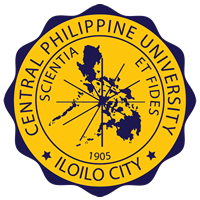By Francis Neil G. Jalando-on

The buildings in the CPU campus after the post-war reconstruction.
As soon as World War II ended, Central Philippine College was reopened by loyal faculty members and returning missionaries on July 1945 at Baptist Center Church, La Paz, Iloilo City. Before it happened, there were two meetings headed by Don Ramon Lopez, the Chairman of the Board of Trustees. One meeting was held on April 23, 1945 at Jaro Evangelical Church and another one on April 30, 1945 at Baptist Center Church. Soon on May to June 1945, completion classes were held so that returning students will be ready for the opening on July.
The destroyed buildings were reconstructed and new ones were built with funds from friends at home and abroad starting on the latter months of 1945. It was on July 1946 when Central Philippine College returned to the Jaro campus. The post-war construction resulted into a well-laid and attractive campus.
The Foreword of the 1946 Centralite appropriately described the post-war situation,
“Many of our classmates and fellow students had died but those of us who had come back and the new ones who had joined us have pledged to ourselves that the Central Torch must forever be held aloft and kept burning that those coming after us, seeing the light, will find their way. It has been a very hard year. No homes, no light, no water, no clothes, no food. Spirits were not only bruised but wounded, moral standards had been let down, sense of values blurred. The usual postwar travail which in this Second World War were made doubly unusual and disheartening! At the beginning of the school year we had nothing to start on but our Central Spirit. As the first postwar year rolled o, we began to collect ourselves. Our physical and spiritual scars began to heal, and as we groped and fumbled for the Anchor we gradually rediscovered ourselves. Let no Centralian worthy of the name every forget that the foundation of the postwar Central Philippine College was laid almost immediately after the last bullet left the carbine of the American soldier-liberator and the Filipino underground guerilla.”
After the Second World War, there was great determination and sincerity among Centralians in continuing the legacy of the institution. And their feelings were captured in these words, “We shall show the generations coming after us that no war of man or machine can destroy the Central Spirit and that, like a river forever seeking the ocean, the College must go on…no matter what the difficulties.”
In 1947, Don Ramon Lopez said, “The first two years of post-liberation has proved that the Central Spirit did not die when all else, less deathless, had died. That Spirit performed miracles of achievement on a campus ruthlessly reduced by the war…No wonder Central by intelligent consensus is awarded the honor of being the “foremost institution of higher learning in West Visayas…The martyrs did not die in vain at Hopevale, for we now keep the torch of their vision burning…We must all keep that faith.”
Perhaps the words of Dean Alfredo Catedral of the College of Education can sum up this “epic period.” He wrote, “We had no buildings, no books, no money, no laboratory equipment. Our only asset was the ‘Central Spirit’ of students, alumni, friends, and faculty members who willingly offered their services.”
References:
Linnea A. Nelson and Elma S. Herradura, Scientia et Fides The Story of Central Philippine University, 1991, p. 76-105
Centralite, 1946, p.2, 6, 21
